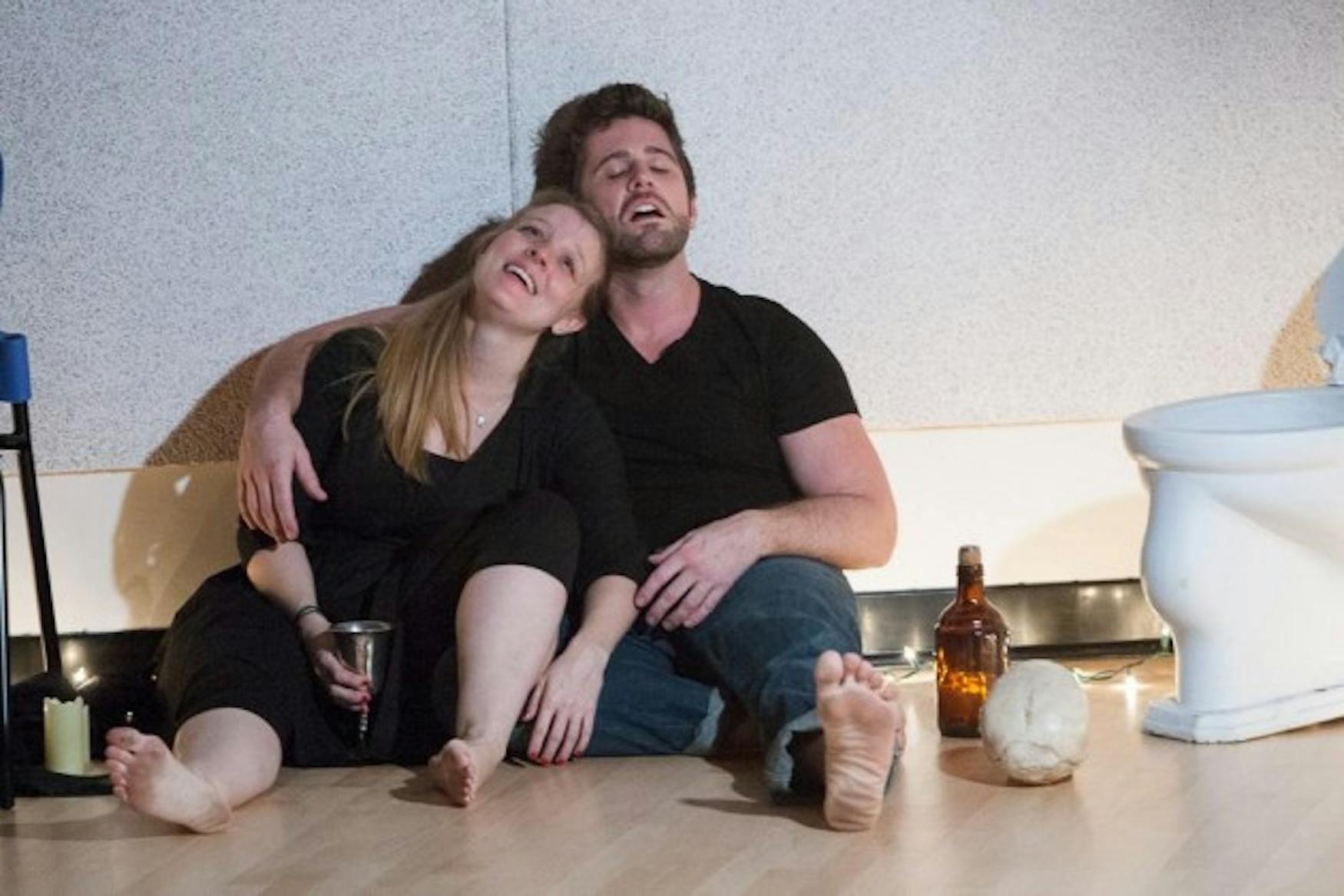Hamlet emerges anew
"What are they doing?" A very young boy with an unkempt mohawk who was squirming in the seat in front of me asked, tugging on the sleeve of the woman next to him. Another boy sat on the other side of him, tossing a realistic-looking plastic skull up into the air and catching it. "They're warming up," the boy's mother answered. In the middle of the small theater stood ten members of the Masters of Fine Arts Class of 2014 acting ensemble, preparing to perform a king of infinite space-HAMLET in a nutshell. Performances lasted through the weekend of Nov. 16 to 18 in the Merrick Theater in Spingold Theater Center, presented by the Brandeis Theater Company.
The actors were all wearing black, and tossed similar skull props back and forth to each other, while they yelled, screamed, sang, danced and posed -each movement or outcry expressing some theme or line from Shakespeare play. HAMLET in a nutshell is a very unique performance developed by director Marya Lowry, in conjunction with the actors who performed in it. In the director's note in the program, Lowry explains that, "The collaborative process invites the actors' voices, ideas and unique points of view into the creation of a theatrical event in exciting and demanding ways."
The lights shut off after the actors introduced their performance, and the audience of students, faculty and theater fans alike, who were seated around the perimeter of the theater, fell silent as the cast chanted in chilling unison: "Something is rotten in the state of... state of... in the state of... Denmark!"
The performance consisted of several well-integrated distinct episodes inspired by Shakespeare's play that formed a cohesive performance. Though plot and character elements of the original Hamlet were easily recognizable, HAMLET in a nutshell took much liberty in both developing those aspects and translating them into more modern intonations. Very little about this performance was "traditional"-the actors rotate through roles, and sometimes a single character was played by multiple actors on the stage at once. They sang and played instruments, ranging from drums to a child-sized piano. They unleash Shakespeare's naughty humor with outrageous puns, innuendoes and rowdy love scenes.
Perhaps the largest difference between the original Hamlet and HAMLET in a nutshell is the explicitness with which the actors develop the characters of the Queen, Hamlet's mother, and Ophelia, his love interest, in contrast to Shakespeare's demure development. There were moments when I felt that their interpretation contributed much clarity to the subtlety of the original play's period-specific idiomatic language, but there were also moments when I wondered if the original playwright would even be able to recognize the amended characters.
A moment of immense clarity occurred for me during the actors' interpretation of a scene in the second half of the play when the King, who is also Hamlet's uncle, and whom he suspects of murdering his father, entreats Ophelia to manipulate an expression of madness from Hamlet. In the original play, the subtlety within this scene has a masking quality, but in the performance, it was quite the opposite. The King and his men strip Ophelia of her virginal white dress, and come upon her like a torrent, slipping a sexy red dress over her head, tossing around her neck strings of pearls and swiping vixen-red lipstick upon her lips. They cast the brightest stage lights upon her and physically throw her to the center of the stage, just in time for Hamlet's entrance. The audience really gains a dramatic sense of the malevolence which provoked the King to set up Ophelia as bait for Hamlet's mania, and how uncomfortable it made her.
Conversely, toward the end of the performance, when the actors interpret a scene in which Hamlet voices to his mother his disapproval of her hasty remarriage, I felt that the actors took perhaps a little too much liberty. The original play ends this scene with Hamlet storming out of the room, leaving the Queen miserable and disgusted. But the actors went a step further, rolling out a piano and lighting the theater with candles, as the Queen performed a cabaret-esque number, banging on the keys and belting out "speak to me no more, sweet Hamlet." After I imagined the actress as Liza Minnelli, I lost it. I couldn't stop laughing during this serious scene.
The intense enjoyment and hilarity I felt during HAMLET in a nutshell amply justified the changes to the original play. The actors were phenomenal-always on time, on key, en pointe. The rest of the audience seemed to enjoy themselves just as much as I did, and left the theater with smiles all around. HAMLET in a nutshell is a reminder that great art is distinguished by a capacity for change and growth, and was an overall superb experience.
*



Please note All comments are eligible for publication in The Justice.